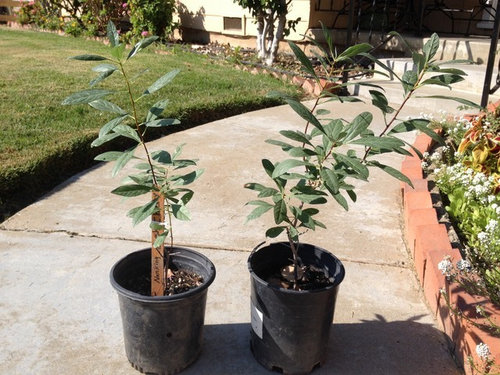Help me identify. Sold as Nanking cherry don't think they are
rebeccalynne15
9 years ago
Related Stories

DECORATING GUIDESCould a Mission Statement Help Your House?
Identify your home’s purpose and style to make everything from choosing paint colors to buying a new home easier
Full Story
LIFEDecluttering — How to Get the Help You Need
Don't worry if you can't shed stuff and organize alone; help is at your disposal
Full Story
COLORPick-a-Paint Help: How to Create a Whole-House Color Palette
Don't be daunted. With these strategies, building a cohesive palette for your entire home is less difficult than it seems
Full Story
SELLING YOUR HOUSE5 Savvy Fixes to Help Your Home Sell
Get the maximum return on your spruce-up dollars by putting your money in the areas buyers care most about
Full Story
SELLING YOUR HOUSE10 Low-Cost Tweaks to Help Your Home Sell
Put these inexpensive but invaluable fixes on your to-do list before you put your home on the market
Full Story
LIFEStop the Toy Takeover by Changing the Way You Think
Make over your approach and get gift givers onboard with your decluttering efforts by providing meaningful toy alternatives
Full Story
SELLING YOUR HOUSEHelp for Selling Your Home Faster — and Maybe for More
Prep your home properly before you put it on the market. Learn what tasks are worth the money and the best pros for the jobs
Full Story
DECLUTTERINGDownsizing Help: How to Edit Your Belongings
Learn what to take and what to toss if you're moving to a smaller home
Full Story
COLORPick-a-Paint Help: How to Quit Procrastinating on Color Choice
If you're up to your ears in paint chips but no further to pinning down a hue, our new 3-part series is for you
Full Story
MOVINGRelocating Help: 8 Tips for a Happier Long-Distance Move
Trash bags, houseplants and a good cry all have their role when it comes to this major life change
Full Story







rebeccalynne15Original Author
trianglejohn
Related Professionals
Pelham Landscape Contractors · Ashburn Landscape Contractors · Canby Landscape Contractors · Cordele Landscape Contractors · Kettering Landscape Contractors · Lexington Landscape Contractors · Mason Landscape Contractors · Milford Landscape Contractors · Natick Landscape Contractors · Parkland Landscape Contractors · South Hackensack Landscape Contractors · St. Louis Landscape Contractors · Wayland Landscape Contractors · West Orange Landscape Contractors · Reisterstown Landscape Contractorslucky_p
rebeccalynne15Original Author
rebeccalynne15Original Author
Konrad___far_north
clarkinks
Konrad___far_north
rebeccalynne15Original Author
rebeccalynne15Original Author
Konrad___far_north
clarkinks
rebeccalynne15Original Author
Konrad___far_north
clarkinks
clarkinks
clarkinks